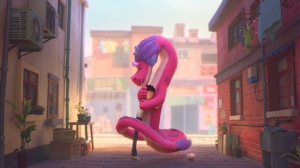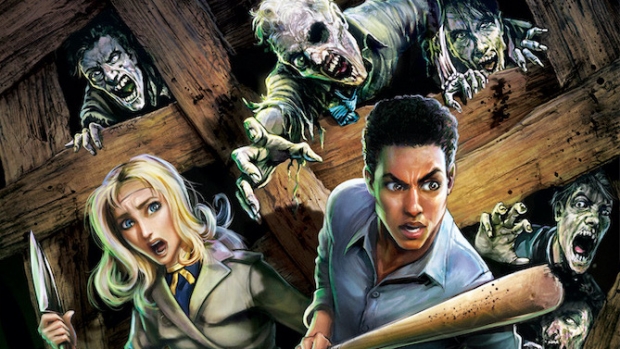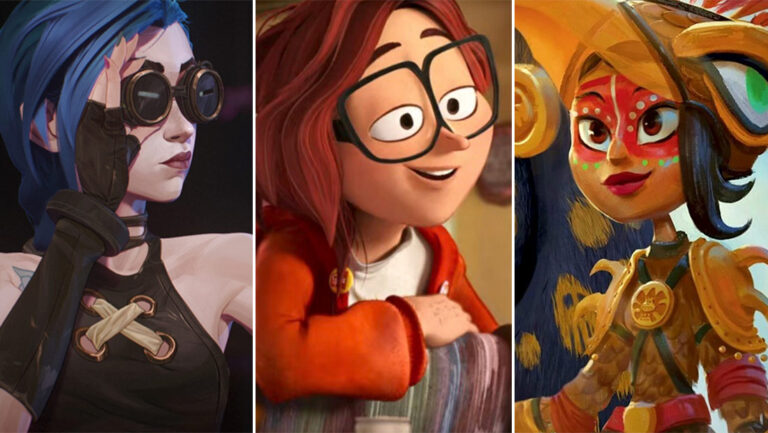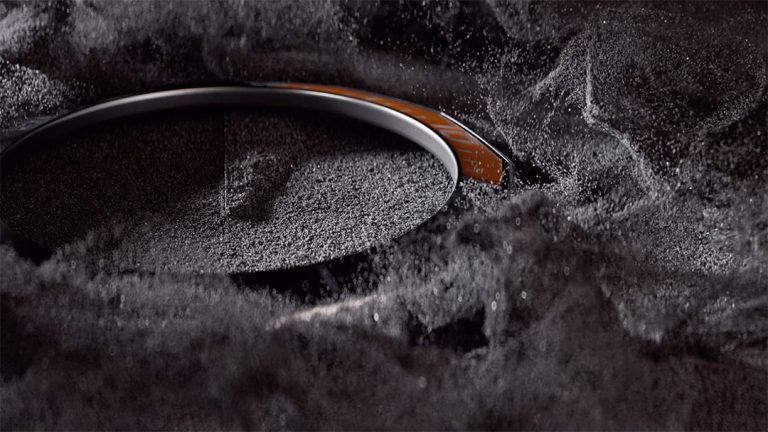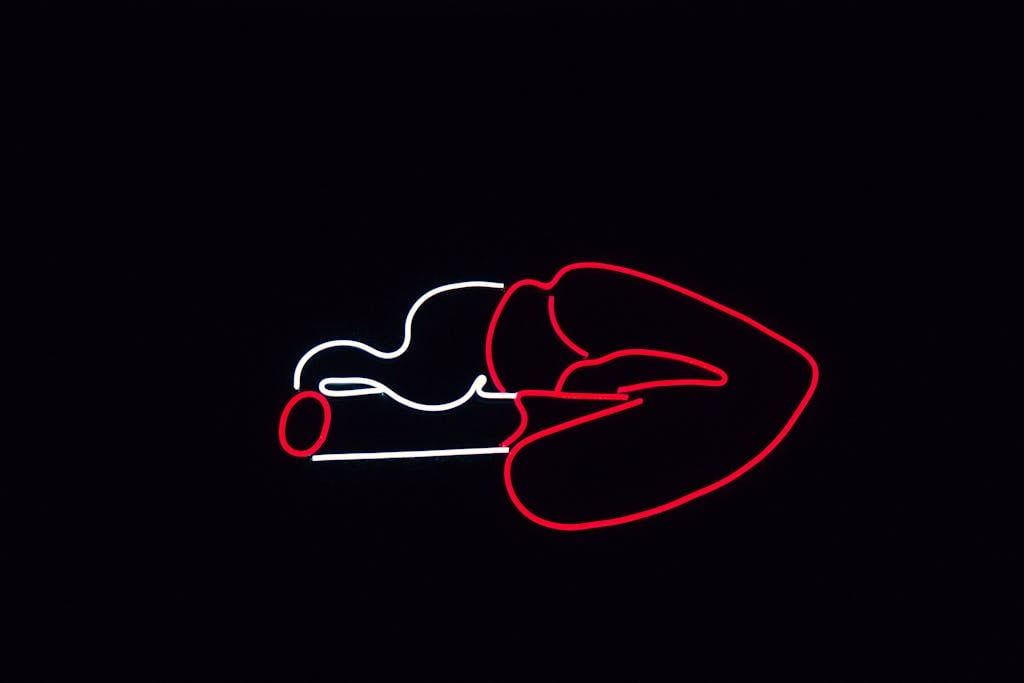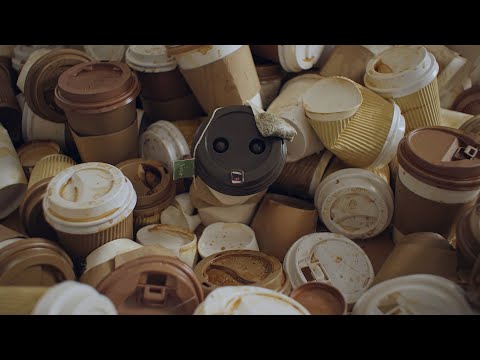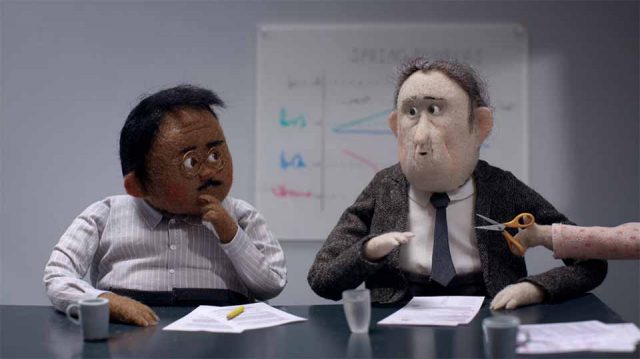CA: Out of necessity, our story was locked by the time I moved to China because of budget. We couldn’t afford to continue revising. But, after three years living in China, I looked at the story and I’m like, “Oh, it’s so Western in so many ways.” It doesn’t mean it’s bad. There are certain premises that in some cases are extremely valuable. Like that sort of idealism, then the assertiveness, of Din as the main character. He pursues a vision for his life that slightly disregards his family and community. That’s a very Western individualistic point of view. It also makes for a great main character because he’s not just stoically sitting around wanting stuff but not pursuing it. Looking at the film now, it’s very much a fusion of Western storytelling, ideas, and conceptions, and authentic Chinese ideas too.
DS: Along those lines, overall, what where the most challenging parts of the production for you?
CA: For me, the dragon is the main character, which is why we called it Wish Dragon. It’s about him, even though it’s kind of sneaky and it doesn’t seem like it. Din’s arc goes full circle. He has a set of values, he almost loses them, then he gets them back with a stronger sense of identity and confidence. But Long changes completely. I was really glad to differentiate him as a character, as somebody who’s actually much more flawed and makes a much more profound change than any genie character I’ve seen before, hopefully without taking over the movie.
Written and directed by Chris Appelhans, Wish Dragon tells the often funny, always captivating story of Din, a working-class college student with big dreams but small means, and Long (John Cho), a cynical but all-powerful dragon capable of granting wishes. Together, the two set off on an adventure through modern day Shanghai in pursuit of Din’s long-lost childhood friend, Li Na. Their journey forces them to answer some of life’s biggest questions – because when you can wish for anything, you must decide what really matters.
And lastly, I had faith that universal aspects of the story could bridge cultural gaps. And it turned out to be a hundred percent true in the most affirming way, but also incredibly hard work to make happen. We had to dub the entire movie in Mandarin, to try and capture authenticity, not just in the dialogue translation, but in the timing and performances.
4 ½ years after we first spoke about his film, I had another chance to talk to Appelhans. Here’s how it went.
I would never want to claim that it somehow speaks to the Chinese experience with any authenticity in ways that other stories have. It’s a very personal expression of a journey that I went on, discovering China 20 years ago through the personal stories of my friends who lived there. To me, the movie is an attempt to recreate that for a much wider audience. We suddenly pull you in with these characters, and then they’ll give you one point of view, one slice of this incredibly complicated place.
Back in late 2016, I had the opportunity to break the news of the film’s official move into development in an interview with the director. It’s an interesting read. What’s most striking is that he turned down bigger money to make the film with Chris Bremble and his studio – at the time, BASE FX, now expanded to include BASE Media. In fact, Appelhans originally turned down Warner, who wanted to produce at another studio. Which pissed Warner off – another story for another day. But the prolific producer of four Shrek films felt so strongly about the story that he eventually came on board anyway.
DS: One of the things I witnessed in China was this kind of Western conceit that we know how to tell stories and we’re going to show everyone here how it’s done. When you see faceplant after faceplant from Western creatives, that conceit might be at play.
Shelly Wan, who came from Pixar, was our production designer for the last two and a half years in China. She grew up and lived in Guangzhou until she was in her twenties. Arthur made a lot of trips to Taiwan when he was a kid, so they both brought an ingrained sense of what that world felt like. And then it became, “Dude this is our chance to put this up on the silver screen forever.”
Chris Appelhans: It was an amazing journey to get that first 15-20 minutes down. But I remember, even in the animatic form, we always knew it needed to come together in that billboard scene. That was kind of the point where all these setups needed to land. Everything needed to add up. We finally watched a version many years ago and finally felt that little “aha!” moment of like, “Yes, we did it!” There’s a lot of stuff there. And some of it’s a little amorphous in terms of the characters’ wants, insecurities, and flaws. It’s not all kinds of cliche set ups. It was a little scary sometimes wondering if that was ever going to work. But I’m so glad you noticed and appreciate how much is being accomplished in that first 20 minutes. Cause it was a journey and a lot of times it didn’t work.
DS: What do you hope audiences come away with when they watch your film?
Wish Dragon, first and foremost, is lovely to look at. Sleek, nicely designed, it captures a slice of China that I’m quite familiar with, warts and all, in ways other similarly positioned animated features haven’t quite been able to do. But, more importantly, it tells a story that kept me watching from beginning to end, with great acting, believable story setups, and an emotional center that felt all-too believable without being forced. Without giving away any spoilers, the first 15 minutes are particularly brilliant.
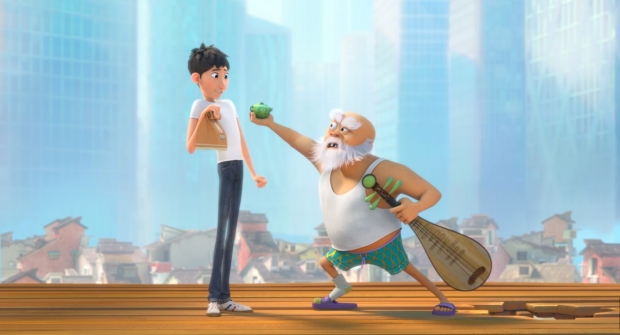
DS: Hah! You started with Chris at BASE, Aron came on. Tencent came on. Sony Pictures Animation came on. Jackie Chan came on. During all this time, BASE has gone through several business morphs. You had a theatrical release in China at the beginning of the year only a few days before COVID-19 shut down everything. And now Netflix is releasing the film everywhere else. How improbable was it that your film ever got to see a wide audience?
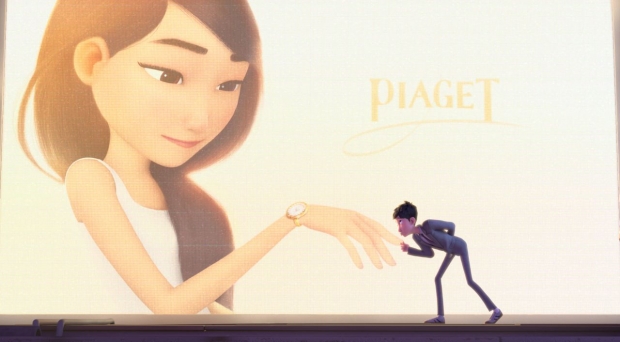
Produced by Aron Warner, Chris Bremble, and Jackie Chan, the film was co-financed by Sony Pictures, Sony Pictures Animation, Sparkle Roll Media, Base Media, and Tencent Pictures. And… Netflix, who is doing us all a huge solid and releasing the film today. The English voice cast includes John Cho, Natasha Liu Bordizzo, Jimmy Wong, Constance Wu, Will Yun Lee, Jimmy O. Yang, and Aaron Yoo.
So, the people involved, their intentions were oftentimes so pure to the potential of the art form, to their connection with the material, that we built this kind of weird gypsy tribe with artists from all across the world. Every province in China, half of Europe and South America, all these wonderful animators who came and joined us from India. That aspect was remarkable.
There was one review in China that kind of went viral, where an audience member wrote that he was so annoyed, so stressed out, going to see a stinky cartoon movie with his kids and aunts and uncles on Chinese New Year, and there he was, approaching the end, and suddenly, he was just so grateful to have all these people around him in his life, to get to share this time with them. I said to myself, “Oh my God, if our film can make people feel like that,” I can go to my grave now and be happy.
DS: Not only is the story strong, but the visuals are as well. The film has a sleek, clean look, not filled with bulbous, bloated CG characters we see so often these days. The production design is great. Who helped you make that happen?
CA: We tried really hard not to be too didactic about the “meaning” of the film. We tried really hard not to be ham-fisted about what’s important in life. “It’s not money. Money is not important.” Are you kidding? Money is so important. Money is great. Money solves so many problems, and money is incredibly important in every part of the world. But it doesn’t give meaning to your life. You can only get that from the human beings in your life. Meaning comes from the relationships we have with each other. So, we wanted to say that essentially, wherever we start in life, whether it’s as a kid in China who’s growing up in a Shikumen, or anywhere else, we all have a choice about how we spend our energy trying to find meaning in life. And if we can try to do it by building and finding meaningful relationships with each other, the world’s going to be a better place.
CA: I was blessed with two wonderful production designers. Arthur Fong was our production designer who did the first two years in L.A. He’s from DreamWorks and was amazing. He really set the visual tone. In terms of that shape language, which was sort of chunky and cute, not trying to be smooth and round and cute and adorable, it was more about what is the essence of modern China, the contrast, all the things that are visually fascinating. We wanted to condense them and turn up the color and sense of shape and personality. We wanted to capture in the animation this kind of beautiful, strange, messy, complicated place that soon will be gone.

Dan Sarto: I won’t lie. I thoroughly enjoyed the film. Having spent quite a bit of time in China, many of the creative decisions you made, the character development, the tone and style, resonated with me. You captured slices of China that felt quite authentic to me. And I have to say, the first act, the setup with Din and Li Na as kids, was just brilliant. It reminded me of the first act in Up for similar reasons.
CA: Yes, you can see it in my eyes.
We wanted the audience in China to see their own world. It’s one of the wonderful things about animation. You get to see a heightened version of real life. So, we wanted to do that for the Chinese audience. We also had a lot of faith that their world, translated in full color and well-designed, could essentially become a fantasy world for a Western audience. Shelly and Arthur were key to both at early stages of pre-production. Then we had the incredibly complicated work of executing through every phase of production.
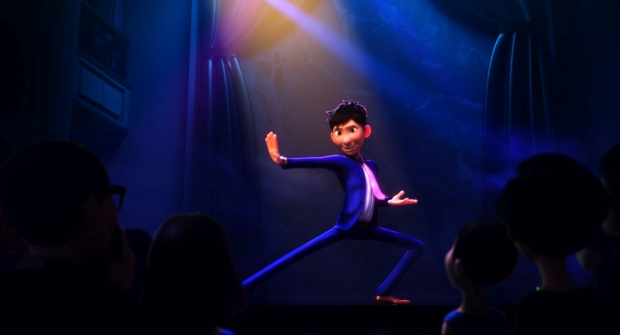
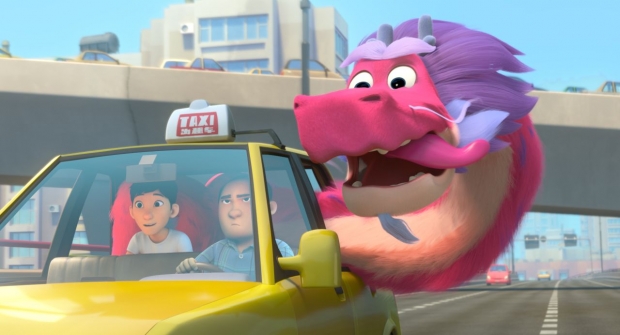
And the only reason it was possible was because of people like Aaron [Warner], who are so wise and have so much gravitas that when somebody says about your film, “Well, this sounds amazing. I’m working at DreamWorks. You want me to be your head of story? Who’s producing?” And I say, “Aaron Warner,” and the whole tone shifts in terms of, “Oh, this is legit. Okay. I might consider taking this job.”
The second big one was essentially building a studio from scratch. There’s a reason that animation studios exist, which is the same reason that car factories exist. Why would you build a factory to produce one model of a car and then abandon the factory and start over again? The infrastructure needed to make a great animated movie is incredibly complicated. It takes a long time to get it right. So, I underestimated what it meant to build a pipeline from scratch, recruit 150 talented people out of nowhere, and manage their development, training, and growth so they could be happy the whole time. There’s so much that goes into a well-run animation studio that you take for granted if you grow up in that system. Like I did. That’s something Sony does really well. Any of the successful big studios, they spend a lot of energy cultivating and managing the talent and technology, just to ensure there’s an invisible framework to make good stories with. I was very spoiled, and I didn’t realize how important that was.
This was a real strange balancing act, because we didn’t want to copy anything from Disney’s Aladdin. But the whole inspiration for this movie, the themes of class, of big choices about what your values are, these were similar to the Disney version, but they also fit the story I wanted to tell. We didn’t want to re-engineer them just to be different because to me, our audience… we were serving some 12-year-old kid growing up in China, who’s going to watch this movie having never seen any other version of Aladdin. To him, this is just a story that speaks to his life. We wanted to do it differently, but not always; sometimes it could be the same, and that’s fine. Fortunately, I never felt like we pulled our hair out or made a choice that was arbitrary. I’m really glad that it feels organic, like the pieces are serving a purpose and don’t exist just because they needed to be there.
At long last, audiences around the world – outside of China – get to sit back and enjoy Wish Dragon, the critically-acclaimed 3DCG feature premiering today on Netflix that’s easily one the most fun and enjoyable animated films to scramble through our set-top-boxes in quite some time.
DS: In Disney’s version, Aladdin’s performance becomes the center attraction in many ways, overshadowing everyone else. In Wish Dragon, Long didn’t seem to dominate the narrative as he easily could have.
And then the second is the ability to be a little more decentralized and still work to function. To have pre-production in LA, then relocate to China for three years, but also have a high-level editor who’s still back in LA supervising stuff, to have some animators onsite in Xiamen and others in Beijing, people were spread out everywhere. COVID-19 only amplified how now, you can stitch together a studio out of all these remote components that facilitates a decentralized production, where, with the right project, you can attract people from a weird cross-stitching of places and locations to get the talent you need to execute at each stage.
DS: It sets a firm foundation for the rest of the film. Back in 2016, you initially described the story to me as a kind of new spin on the tale of Aladdin. It could have easily felt contrived. But the way you crafted the story and characters, nothing felt forced or bolted on.
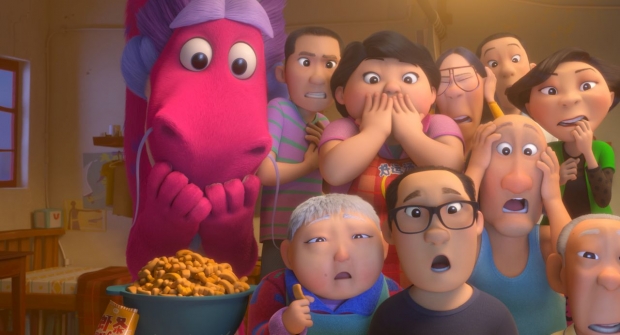
And when you do watch the film, you’ll realize that Appelhans stayed true to his vision in ways that most likely would not have been feasible at a larger animation studio. Though his film was made for a Chinese audience, the story, a modern take on the ancient tale of Aladdin, rings universal. And, it’s a hoot.
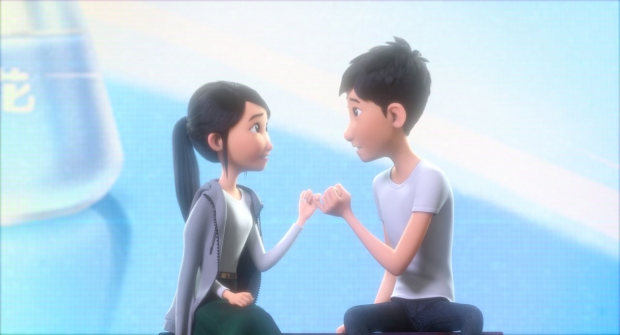
CA: It shouldn’t have. It’s very much like [Ernest] Shackleton’s journey, like we really all should have died stuck somewhere in the Antarctic ice. And we almost did many times. I’m sure it’s like this with every film, but if I had known what I was really undertaking, I would have probably thought, “This is crazy. I shouldn’t do it.” But it’s a testament to two things. One, the pure heartedness of people in the animation business, in the sense that we recruited talent at every stage… people who left much better paying jobs at places like DreamWorks, or much comfier positions at studios, they wanted to work on this film. My editor, who would come home from his day job, have dinner, and then sit down at his editing station from 9:00 p.m. until 3:00 a.m. and edit with me and then go to sleep for four hours and go back to work, he did that for a year and a half because he cared about the movie. He could’ve just said, “Screw it guys, I can’t take this.” But he knew we were in this critical stage of animation and layout.
DS: I started talking to your producer, Chris Bremble, from BASE Media, at his BASE FX studio in China long before the film even had a name. Then you and I spoke back in 2016 in an interview that announced the movie. This film has been a long torturous path to get made.
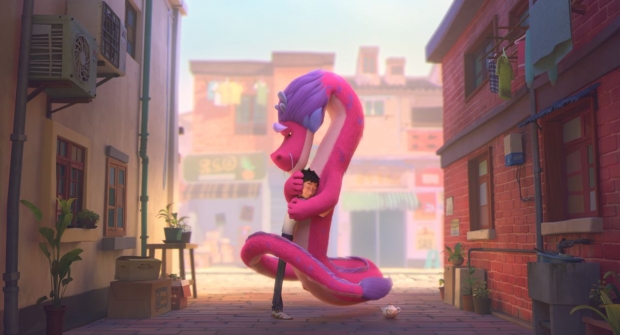
CA: I think there were probably three. First off, keep in mind, I was so comfortable working in big studios. Budget was never really an issue for me. You always had time. If you’re working at DreamWorks, LAIKA, or Disney, you don’t have to worry about budget. You worry about the creative. With Wish Dragon, I was pretty much trying to make a million movie for a fraction of that budget. What that does is completely eliminate your margin of error from day one. You can’t waste a day with your story department. You can’t have a screening that goes sideways. You can’t have a scene that you send into layout and then realize it’s not in the movie anymore.
I lived in China long enough to understand that these jokes have context. It’s a real interesting challenge for all stories like this. There’s no right or a wrong way to make a film for a specific audience and culture that has the power to be embraced, understood, and connected to by the rest of the world. We’re very used to films that work as “America out;” we make these movies for ourselves, and then other people find a connection in them. Now, it’s really fascinating to see films made the other way, which is, you watch a film like Demon Slayer, or a Miyazaki film, which are so specific to a culture and history outside the U.S. yet mean so much to us as Americans. So, I think that’s a really confusing, wonderful next stage for the art form as a kind of global crossfire of stories. And I underestimated how complicated that was because I’d always stood in the Hollywood middle of things, assuming that’s how it worked.
Dan Sarto is Publisher and Editor-in-Chief of Animation World Network.
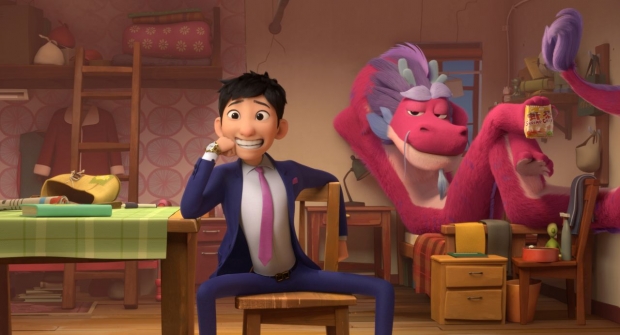
It’s like, if you’re cooking and you need to use every ingredient in the fridge and not waste a single drop. Or burn anything. Otherwise, you won’t have enough food to feed everyone. So, I was a little cavalier with the movie I wanted to make. When we figured out a budget, I said, “Yeah, sure. We’ll figure it out. Whatever.” At the time, Aaron was like, “Oh my God. Okay. I hope we can do this.” I was a little naïve.

CA: That goes to something we really wanted to do, and hopefully, have managed to do. We talked about this years ago. When I found out that “Aladdin” was originally this Chinese folk tale, I went back and read it. It’s similar to the Disney Aladdin story, but has other unique stuff that we tried to embrace. We wanted to hit attributes from that folk tale that were different: the fact that Din lived with his mom, he meets the Genie, he falls in love with the princess, he loses himself, and he finds himself. But the other thing that was really cool was the Genie was kind of a selfish, manipulative jerk, spirits often are in those old folktales.
